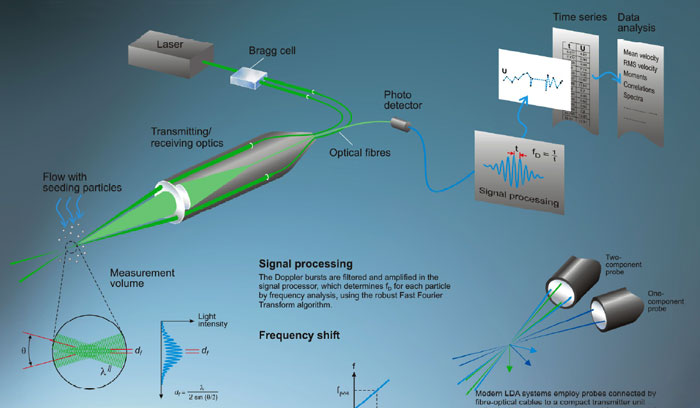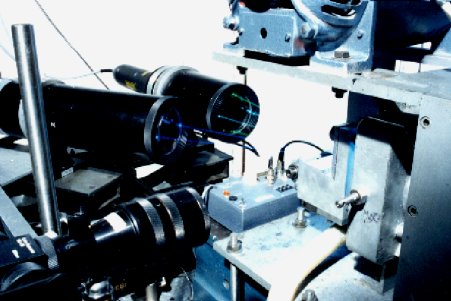The Laser Doppler Anemometry (LDA) technique is a point-based velocity measurement for air-seeded particles 0.5 - 5 microns in size, and particles 1-20 microns in water. It is a non-intrusive measurement technique, with the exception of the seeded particles. The particles must be carefully selected for their buoyancy in the flow characteristics being observed - they much be able to keep well with laminar (smooth) or turbulent flows. LDA is most useful for measure flow dynamics in small spatial dimensions, and for this application it has become an industry standard. Recently, the use of three lasers of different colors has allowed larger spatial dimensions to be measure, though the over area of measurement is still quite small when compared with other techniques in this genre.
This technique (reference-beam LDA) was first reported by Yeh and Cummins in 1964.� Forty years on, LDA has become a well established optical velocimetry technique which is used extensively in fluid flow studies.� Its reliability allows it to be used as a bench-mark validation tool for planar velocimetry techniques - eg. DPIV, DPTV, DGV (the latter being a method of measuring gross field velocities).

An LDA probe consists of a tube directing laser light output from 2 - 4 sources, which converge at a point (a region of wavelength-to-angle/volume restrictions). A sensor at the center of the LDA probe measures the phase shift of light caused by particles moving through the region of flow. The signal is fed into a computer, which converts the variations in light into velocity information. The above diagram is a excerpt from the larger brochure

A three-component LDA system